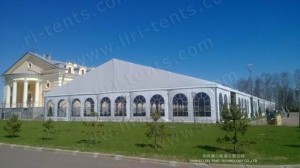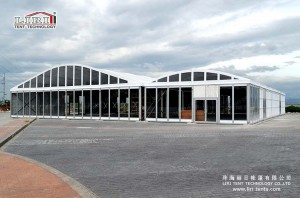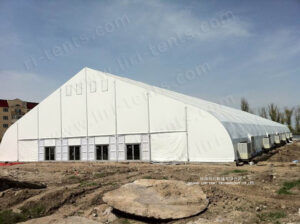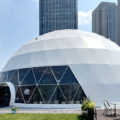There are an amazing variety of tents out there today in different styles and materials all made for different needs and environments. The type of tent you need will depend on how and where you plan on using it. What environment will it be used in; hot or cold, or rainy or dry? How many will be sleeping with you? Will you be carrying the tent to the campsite from a car or backpacking? Below is a quick look at the different styles and uses of tents in hopes to give even the newbie an upper hand when trying to choose that perfect home away from home.
Traditional A-frame or ridge tent
A-frame or ridge tent form in the shape of an A when erected and have been used for years. They are generally light by themselves but need an added tarp for weather protection which makes them heavy to carry around. Head room is very limited because of the steep sloping sides and they are not very sturdy in strong winds. Typically they consist of two poles at each end with a single one running down the center and the tent fabric hung over the ridge. Keeping this general design in mind can work rather well in the event you become stranded or lost in the backcountry and have a poncho or other covering in which you can make a quick emergency shelter.
The modified A-frame version utilizes curved poles instead of straight poles allowing more stability in winds and improved head and interior space. They also have a rain fly that allows you to leave the tarp at home making them lighter.
Dome tents
Dome tents seem by far to be the most popular today. Look around any primitive campsite and you’ll see plenty of dome style tents. Construction is rather simply accomplished with a number of flexible poles passing each other across the center of the roof with their ends traveling down to the base or floor of the tent. This construction provides the tent with strong rigidity making it easy to move after set up if needed, stable in strong winds and can handle a good amount of snow fall.
Curved tent
The Curve tent design is very durable and strong and the wind loading is 100 kg/hr. It is convenient and easy to set up and tear down. It is easy to store because of its small volume. This tent like the Big tent has a wide range of applications for temporary events. Whether you want to construct a temporary or permanent tent both are an excellent choice. This type of structure is superior because of its fast installation, dismantling, and transportation and because of its strength and security. Due to the high beam aluminum alloy curve design and perfectly extended system, it enables the tent to be resistance to high wind and snow speeds.



